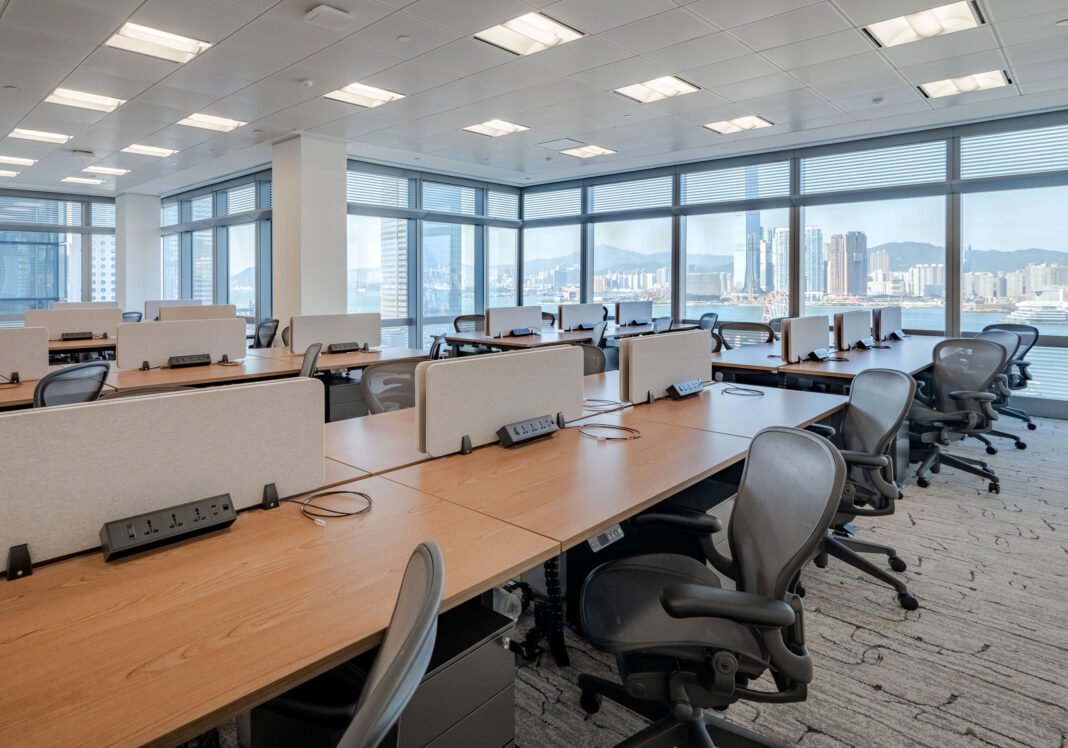News
Gross Leasing of Office Space Up 11% YoY to 178 Lakh sq ft in Q2 2025

New Delhi, July 24, 2025: The office market is gaining impressive momentum with gross leasing activity rising 11 per cent YoY to touch 178 lakh sq ft in Q2 2025, per a Colliers’ report. Five of the top seven office markets witnessed a growth in Grade A space uptake on an annual basis, a clear signal of returning corporate confidence.
Delhi-NCR continued to assert its significance with Grade A gross absorption rising 16 per cent YoY to 2.2 mn sq ft (MSF) in Q2 2025. The region also recorded a 25 per cent YoY growth in H1 2025 net absorption, indicating strong occupier interest.
With infrastructure upgrades and strong demand from BFSI, tech and consulting firms, Delhi-NCR remains a magnet for both domestic and global corporate expansions. BFSI firms, especially fintech players, are anchoring demand in key markets like NCR and Mumbai, seeking agile, tech-enabled offices.
Meanwhile, engineering and R&D occupiers are absorbing space in Bengaluru, Chennai and Hyderabad as they scale innovation teams. Flex operators are also seeing a boom with hybrid work models prompting enterprises to prefer scalable, cost-efficient workspace solutions.
Besides, per Cushman and Wakefield, the top eight cities together clocked a robust 214 lakh sq ft of space take-up, reaffirming India’s position as a preferred occupier hub in the Asia-Pacific region.
This steady rise in net absorption reflects strategic expansion by occupiers. Companies are increasingly migrating from outdated offices to Grade-A spaces that prioritise wellness, sustainability and tech integration. This shift is especially evident in core urban markets, like Gurugram and Faridabad, where developer offerings with ESG compliance, smart building features and premium connectivity are surging, aligning with evolving workforce expectations and corporate ESG mandates.

“Delhi-NCR’s 16 per cent YoY growth in Grade A absorption underlines its strategic rise as a core hub for corporate operations, particularly for GCCs that now account for a quarter of all leasing activity,” says Mohit Goel, MD, Omaxe Group.
“Emerging markets like Faridabad stand out as one of NCR’s most attractive destinations for large-format office spaces. The region’s competitive rentals, ample land availability and growing interest from occupiers seeking affordability without compromising scale complement its growth.”
With infrastructure upgrades, metro connectivity and Jewar Airport on the horizon, “we anticipate Faridabad becoming a key beneficiary of NCR’s next commercial wave”.

Sandeep Chhillar, Founder and Chairman, Landmark Group, says, “The resurgence in office leasing reflects a qualitative shift in what occupiers want: wellness-oriented spaces, smarter energy use and seamless hybrid integration. We’re seeing BFSI and consulting firms take up consolidated, future-ready office campuses.”
In Delhi-NCR, Gurugram remains a key destination for MNCs. “Developments across the region have introduced a strong demand from both Indian corporations and global entities realigning their Southasia presence. Additionally, game-changing projects like the Dwarka Expressway and metro expansion in the pipeline, Gurugram’s appeal is only set to grow further. As businesses look for dynamic, future-ready spaces, Gurugram continues to lead the way as NCR’s ultimate corporate hub.”
Additionally, according to a Vestian report, leasing of office space to establish GCCs stood at 31.8 MSF in 2024-25 compared to 25.6 MSF in the preceding year. Accounting for 42 per cent of the pan-India absorption in 2024-25, GCCs led the charge, setting the stage for a record-breaking 2025. Thus, from tech giants to multinational GCCs, India’s compelling value proposition is setting it apart from other APAC markets in both size and resilience.

“The surge in office leasing reflects a deliberate corporate shift—not just into metros but into Tier 2 cities that offer operational value and untapped potential. We see growing interest in these cities, where occupiers are drawn by lower costs, better talent retention and improving infrastructure,” says Uddhav Poddar, CMD, Bhumika Group.
“Meanwhile, in NCR, micro-markets like New Gurugram are evolving as a next-generation commercial hub, offering seamless infrastructure, modern developments and proximity to new residential catchments. Thus, as India’s 2025 office growth story is becoming increasingly multi-nodal, the demand for office spaces will continue to grow.”

Prakash Mehta, CMD, Ocus Group, says, “What truly differentiates Gurugram’s office space growth is the forward-looking mindset behind it. We’re seeing Fortune 500 firms and GCCs gravitate toward the city for its tech infrastructure, talent base and urban mobility.”
Emerging pockets like Sector 99 along the Dwarka Expressway are gaining traction as integrated business districts that balance efficiency with experience. “For developers, this puts forth an opportunity to create sustainable, employee-centric ecosystems to match the expectations of the next generation of global occupiers.”
Thus, Delhi-NCR, led by its micro-markets, continues to dominate. As businesses recalibrate their footprint for agility, ESG goals and talent access, India’s office market stands poised to define the future of workplace evolution in the APAC region.

 News4 weeks ago
News4 weeks agoInfrastructure Automation Company Enlite Launches World’s First Patented Edge Controller for Intelligent Infrastructure

 News2 weeks ago
News2 weeks agoTWH Hospitality Announces Aggressive F&B Expansion Plan with ₹30 Cr Investment

 News2 weeks ago
News2 weeks agoCanonicus Capital Closes ₹200 Crore Private Equity Fund Focused on NCR Real Estate

 News2 weeks ago
News2 weeks agoThe Big-Size, Branded Luxury Ticket: Is a New Chapter Unfolding in Indian Real Estate?

 News4 weeks ago
News4 weeks agoGodrej Properties Crosses FY26 Annual Business Development Guidance with Acquisition of 75-acre land parcel in Nagpur

 Guest Column2 weeks ago
Guest Column2 weeks agoGhats With a View: Tilari Can Redefine Farmstay Market in India

 News4 weeks ago
News4 weeks agoReal Estate Investment Momentum in APAC, India to Hold Steady Through 2026: Colliers’ Survey Insights

 News2 weeks ago
News2 weeks agoLoans to Get Cheaper as RBI Cuts Repo Rate to 5.25% Amid Low Inflation, Robust GDP Growth





























